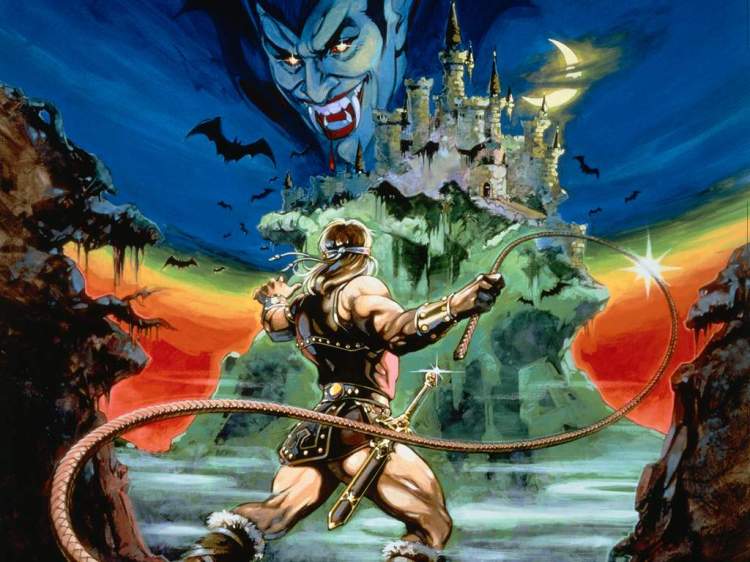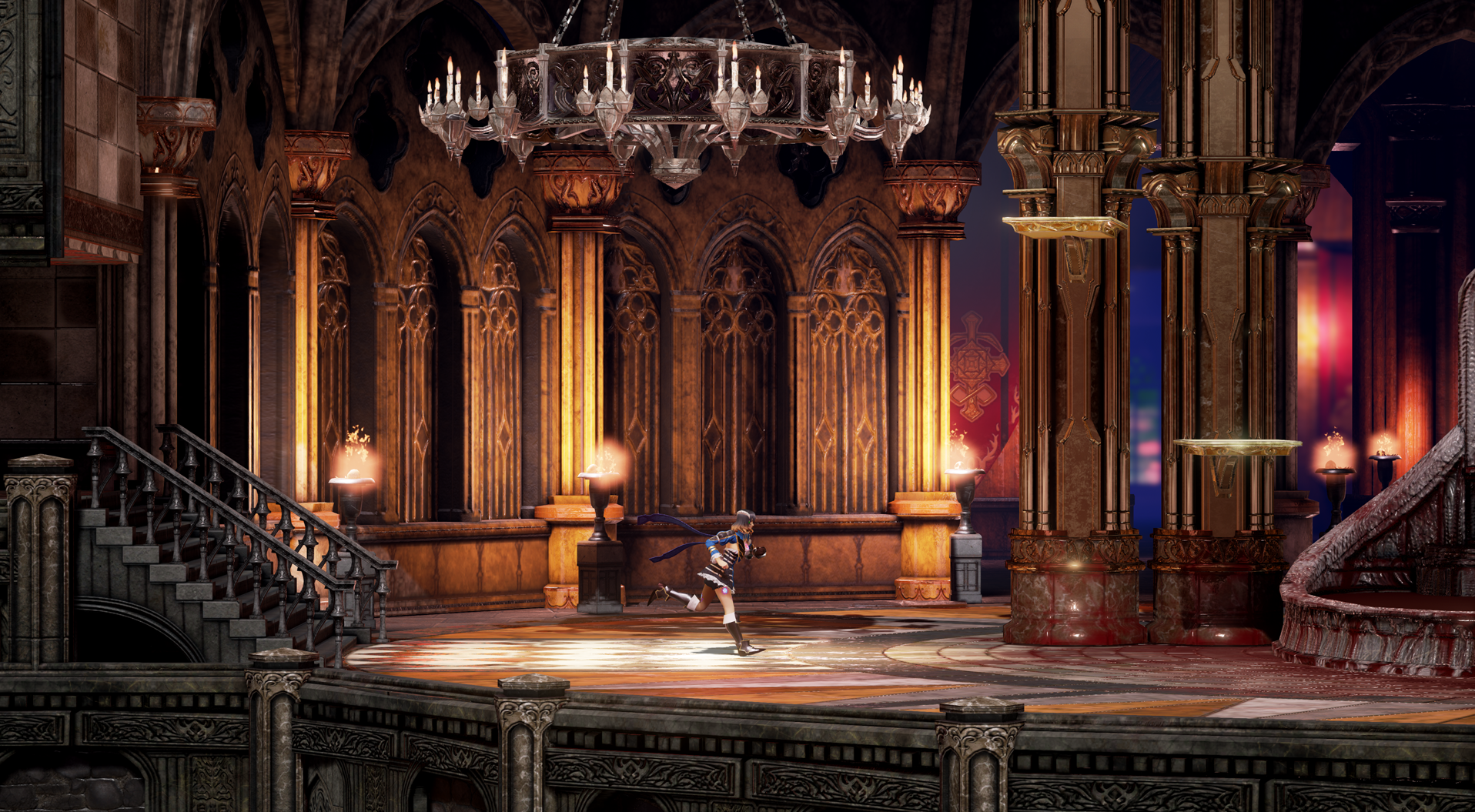What a terrible night to have an anniversary. Castlevania, the series of gothic-themed action games, is now 30 years old.
The original Castlevania came out for the Nintendo Entertainment System (more specifically, the Japanese Famicom Disk System) on September 26, 1986. The 2D side-scroller spawned a series with almost 40 entries, with titles on platforms like the NES, Super Nintendo, Genesis, PlayStation, Game Boy Advance, PlayStation 2, Nintendo DS, and Xbox 360. In the old days, Nintendo had Mario, Capcom had Mega Man, and Konami had Castlevania. The franchise has sold millions of copies (although Konami declined to tell us exactly how many). Its early releases were some of the most challenging platformers of their time, and the series would eventually elevate the 2D sidescroller by inventing the “Metroidvania” subgenre, combining the exploration of Nintendo’s Metroid series with Castlevania’s gameplay.
Sadly, Castlevania’s future looks as dim as a night in Dracula’s castle.
Konami has mostly gotten out of the console game-making business, focusing instead on gambling and mobile. We haven’t heard much about Castlevania since Lords of Shadow 2 came out in 2014, and even that release felt insignificant. It was a 3D action game that came out for the PlayStation 3 and Xbox 360 after their successors, the PlayStation 4 and Xbox One, released in 2013. We haven’t heard about a new Castlevania game since.
The early days
But even if we never see a new Castlevania, the series has given us plenty of great games to cherish. The original remains one of the best. 2D side-scrollers dominated in the NES era. Konami didn’t do anything new, but its monster mashup stood out for its creepy setting inspired by classic movies such as Dracula. Most NES games were colorful and cheery. Castlevania was dark. OK, it may not seem like much compared to the realistic gore-fests we can play today, but this was about as close as we got to a “scary” game in the mid ’80s.
Fans remember Castlevania as much for its punishing difficulty as its monsters. Compared to Mario or Mega Man, your movements feel stiff. You can’t change your direction mid-jump, and your whip can feel like a slow attack. This forced you to be careful. You couldn’t just run through levels, hoping that fast reflexes would see you through to the end. You had to be methodical, planing each jump and attack. You still needed reflexes, of course, especially with flying Medusa Heads filling the screen.
Castlevania had two sequels on the NES. The first, Simon’s Quest, was a less linear game, focusing on exploration and role-playing game mechanics. Dracula’s Curse was more like the original, but gave players the option travel to Dracula’s castle as multiple characters.
Moving to new hardware
Subsequent Castlevania games would follow the original’s mold for some time. Super Castlevania 4 for the Super Nintendo, Bloodlines for the Genesis, and Rondo of Blood for the PC Engine (sadly, that one did not initially come out in the U.S.) were some of the finest side-scrollers released in the 16-bit era. But Castlevania evolved in 1997 on the PlayStation with Symphony of the Night.
Symphony of the Night took some of the ideas back from Simon’s Quest. It was less linear, allowing players to explore Dracula’s castle as they found upgrades, new items and spells, and leveled up their character by defeating monsters and bosses. While many of the classic NES franchises were moving to the 3D world, Castlevania reinvigorated 2D gaming. Symphony of the Night helped to coin the “Metroidvania” subgenre, so named because of its melding of Castlevania’s 2D action with Metroid’s focus on exploration. These ideas thrive today through games like Ori and the Blind Forest.
Of course, Castelvania did try to extend its reach to 3D gaming. It just never took. Castlevania and Legacy of Darkness for the Nintedo 64 were clunky and awkward, and its polygonal graphics looked primitive and blurry compared to Symphony of the Night’s 2D pixels. To be fair, a lot of Nintendo 64 games were clunky. This was a time of discovery for the industry as everyone learned the ropes of 3D gaming.
But Castlevania never had a huge 3D hit. While sequels to Symphony of the Night thrived on portable consoles like the Game Boy Advance and Nintendo DS, PlayStation 3 games Lament of Innocence and Curse of Darkness went largely unnoticed.
The reboot
In 2010, Konami finally went all out in trying to make Castlevania succeed in 3D with Lords of Shadow, a reboot of the franchise that featured combo-based action and impressive production values. It was a decent success for Konami, selling over a million copies. However, others dismissed it as a God of War clone.
It also took Konami too long to create a sequel. Again, Lords of Shadow 2 didn’t release until 2014, and on aging platforms.
And then the drama at Konami started, which ended with Metal Gear Solid V: The Phantom Pain director Hideo Kojima leaving the company as the publisher cancelled his future project, Silent Hills, and began to focus away from console game development. At the time, much of the news was focused on franchises like Metal Gear and Silent Hill. Castlevania is the unspoken casualty of that turmoil.
The future
But not all hope is lost. Koji Igarashi, who worked on the Metroidvania entries in the series, is making a spiritual successor to those 2D Castlevania games with an independent title called Bloodstained: Ritual of the Night. It might not technically be a Castlevania game, but as someone who got to try it at this year’s Electronic Entertainment Conference in Los Angeles, I can tell you that it definitely plays like one. You can see Castlevania’s influence in other games. Bloodborne‘s gothic setting and grotesque monsters in some ways make it the ideal 3D Castlevania game that we never got.
But what will become of the real series? Is Konami content to let it slip into oblivion? It’s sad that Castlevania can’t receive the 30th anniversary celebration from its publisher that it deserves. The series is an institution in gaming, especially for those who, like me, grew up in the 8-bit era. Just hearing the name “Castlevania” fills me with warm feelings of axes, wall meat, and Medusa … well, no. Screw the Medusa Heads. But the rest of Castlevania? I miss ya, buddy.
VentureBeat's mission is to be a digital town square for technical decision-makers to gain knowledge about transformative enterprise technology and transact. Learn More





